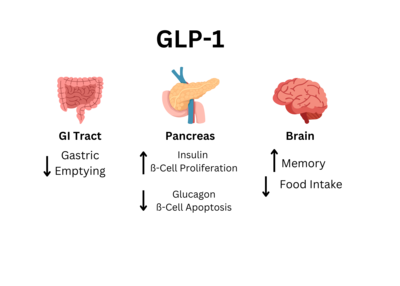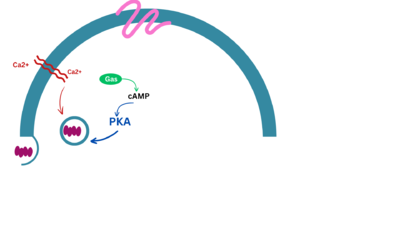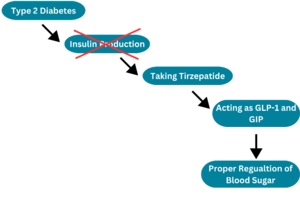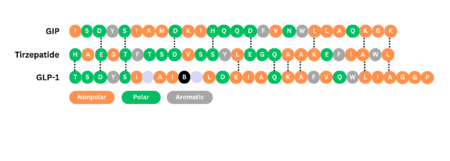User:Lily Lindemann/Sandbox1
From Proteopedia
(Difference between revisions)
| Line 6: | Line 6: | ||
== Function == | == Function == | ||
| - | [[Image:GLP1.png|400 px|right|]] | + | [[Image:GLP1.png|400 px|right|thumb|Pathway of Insulin Secretion through GLP-1 Receptor]] |
GLP-1R works in conjunction with GIP-R to maintain blood glucose levels after the ingestion of food. It is imperative for these receptors to work well so diseases like diabetes and obesity do not ensue. | GLP-1R works in conjunction with GIP-R to maintain blood glucose levels after the ingestion of food. It is imperative for these receptors to work well so diseases like diabetes and obesity do not ensue. | ||
| Line 19: | Line 19: | ||
[[Image:pathway.png|300 px|left|thumb|Nonfucnctional Pathway due to Type II Diabetes]] | [[Image:pathway.png|300 px|left|thumb|Nonfucnctional Pathway due to Type II Diabetes]] | ||
Type II Diabetes is when the pancreas does not produce enough insulin for the body.[https://www.mayoclinic.org/diseases-conditions/diabetes/symptoms-causes/syc-20371444] This in turn makes the blood glucose level dangerously low. When the sugar levels in our blood become too low people can become dizzy and tired. On the other hand, when blood sugar levels become too high then can become feverish and sick. | Type II Diabetes is when the pancreas does not produce enough insulin for the body.[https://www.mayoclinic.org/diseases-conditions/diabetes/symptoms-causes/syc-20371444] This in turn makes the blood glucose level dangerously low. When the sugar levels in our blood become too low people can become dizzy and tired. On the other hand, when blood sugar levels become too high then can become feverish and sick. | ||
| + | |||
| + | |||
Revision as of 14:21, 11 April 2024
Glucagon-Like Peptide 1 Receptor (GLP1-R)
Introduction
| |||||||||||




